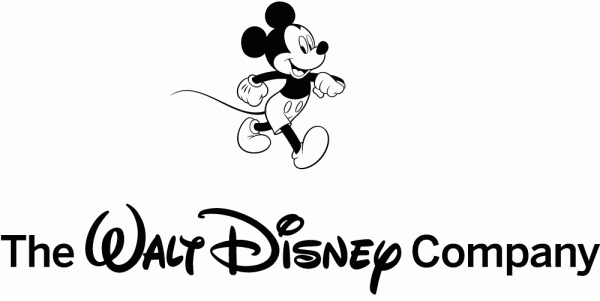After an excellent start to the year, The Walt Disney Company saw its 2019 Second Quarter (Q2) earnings beat analyst estimates. The company reported revenues of $14.922 billion and earnings per share (EPS) of $3.53 and comparable EPS of $1.61. Wall Street analysts were expecting revenues of $14.371 billion and comparable EPS of $1.58 according to Reuters. Disney beat stock analysts estimates for revenues by 3.8 percent and earnings per share by 16.4 percent. In the quarter, Walt Disney Co. also completed its purchase of 21st Century Fox and announced the launch of its Disney+ streaming service after the quarter; however, before the earnings announcement. The Disney+ announcement created significant excitement about the company’s future, and the company’s stock price increased substantially in the quarter.
The good earnings numbers for the quarter were driven by Parks, Experiences, and Products and Media Networks. Studio Entertainment and Direct-to-Consumer and International were the two segments that lagged slightly in the quarter.
PowerPoint Presentation of the Quarter
Slideshow/Powerpoint Presentation for this article (PDF Format)
Above: The Walt Disney Company corporate logo with Mickey Mouse walking.
The Walt Disney Company 2019 Q2 Performance Review / Financial Analysis
For the second quarter of 2019, the company performed very well once again. Walt Disney has been a solid performer for the past several years, and this quarter’s earnings report shows that the company is continuing the trend. The company had reliable performance from its best segment, Parks, Experiences, and Consumer Products. That division saw its revenues and earnings increase from last year’s quarter. Media Networks was the next best performing segment with inline revenues and a 3 percent decline in income. The only concern for the firm is with Studio Entertainment. That segment saw its earnings and revenues decline from last year’s quarter once again. Disney is blaming the type of movies that were released in the quarter compared to the previous year’s quarter for the declines in revenues and profits. Direct-to-Consumer and International also reported increased losses; however, the losses were expected.
Studio Entertainment’s performance will need to be robust for the remaining two quarters. The firm has seen great results from the movies that it has released during the year; however, the company is up against comparable results from Black Panther and Star Wars in the prior year.
The company also added Fox and its related studio divisions to the segment, and it has yet to been seen how 21st Century Fox will affect the performance of the division. Going forward, Studio Entertainment will be a key division to watch.
Another division that saw its financial performance decline was Direct-to-Consumer and International. The decline was expected as the company continues to invest in its streaming services. The company did announce its expectations for the division in a special investor day meeting on April 11th, 2019. Wall Street and investors were happy with the financial projections, and the company’s stock soared as a result. In my previous post, I mentioned that streaming services would be a key area to watch, and it turned out to be an essential news item since the last quarter.
The Walt Disney Company is performing well despite seeing revenue and earnings declines from Studio Entertainment and continued losses from Direct-to-Consumer and International. Based on the solid start that Walt Disney has had for the year, it looks like the organization will continue to have quality results for the year.
Segment Financial Performance Analysis
Media Networks
Media Networks had roughly inline results from last year. Revenues came in at $5.525 billion compared to $5.508 last year. Operating income declined 3 percent from $2.258 billion last year to $2.185 billion this quarter.
Cable Networks was the one division of the segment that performed well for the quarter. Revenues increased 2 percent to $3.7 billion, and operating earnings increased 2 percent to $1.8 billion. ESPN was the driver of higher operating income as the sports channel was able to obtain increased affiliate revenue to counter increases in costs and advertising revenue.
Broadcasting was a week point for the segment as Walt Disney saw its income decline 29 percent to $247 million despite only seeing revWaenues decline by 2 percent to $1.8 billion. Disney had higher production cost write-downs and increases in the cost of programs. In addition, the company had lower viewership and lower advertising revenue in the quarter.
Parks, Experiences, and Consumer Products
Park, Experiences, and Consumer Products continued its solid performance by posting revenue increases of 5 percent, and operating income increases of 15 percent. Revenues for the quarter were $6.2 billion, and income was $1.5 billion. Disney credits income growth at their domestic resorts, cruise line, Hong Kong Disneyland, and consumer products as the main drivers of income growth. For the domestic theme parks side of the segment, Walt Disney World Resort accounted for the income growth on the domestic side. Guest spending growth was due to increased food and merchandise spending and increased ticket prices.
On the international side of the resort business, the company only mentioned Shanghai Disney Resort and Hong Kong Disneyland Resort. Shanghai’s results were in line with last year; however, the company saw lower attendance at the resort. Increased ticket prices were able to counter the attendance declines, however. Hong Kong Disneyland Resort had increased attendance numbers and occupied room night according to the company.
Consumer Products had growth in its game business due to the sale of video game rights and the licensing of Kingdom of Hearts III. The company also had declines in its merchandise licensing business due to the recognition of a new accounting standard.
The main concerns in this division include the performance of Disneyland California and the other international theme parks that were not discussed in the earnings report. Those areas are likely underperforming as the company decided not to talk about their financial results during the quarter. Even if that is the case, those divisions are still relatively stable, and if The Walt Disney Company has flat results, the firm is still in great shape.
Studio Entertainment
Studio Entertainment was one of the company’s weaker divisions when comparing its results to last year’s numbers. Disney reported that segment operating income declined 39 percent to $534 million while revenues fell 15 percent to $2.1 billion. Walt Disney Co. attributes the declines to the extraordinary results that their Star Wars and Black Panther movies had in last year's quarters when compared to the release of only one Marvel film (Captain Marvel) in the quarter. For the start of the year, the company has been mentioning that it is going up against excellent results that occurred last year, and that is affecting the comparisons significantly. In addition to its movie results, home entertainment also saw lower results based upon the same explanation for its comparable theatrical performance.
This division has seen significant declines in financial performance for both quarters of 2019, as the company saw revenues decline by 27 percent and income by 63 percent for the last quarter. Disney continues to lead the box office despite the declines in its results. The remaining movie slate for this year is, and the company is set up to have solid performance from its movies for the rest of the year.
Direct-to-Consumer and International
Direct-to-Consumer and International continued its current trend in reporting losses; however, Disney saw increased revenues, which was a positive. The company reported a 15 percent increase in revenues to $955 million and a 109 percent increase in operating losses to $393 million (loss). The loss was contributed to costs to run ESPN+ and the upcoming launch of Disney+. International channels also saw higher financial performance figures which the firm claims are due to increased affiliate fees and lower programming costs for sports.
Cash Flow Review – Financial Analysis
Cash Flows for the past six months ending on March 30th, 2019
For the second quarter, The Walt Disney Company saw its cash provided by operations decline by $749 million or 11 percent, and its free cash flow decreased by $1.095 billion or 23 percent for the past six months when compared to last year. Cash provided by operations was $6.014 billion and free cash flow was $3.624 billion. Disney attributes the declines in cash provided by operations to lower segment results and increased interest and tax payments. Investments in parks, resorts, and other properties increased $346 million to $2.390 billion, which is a 17 percent increase from the prior year’s quarter.
Investment in Disney’s parks was behind the overall investment in the parks, resorts, and other properties metric. Domestic park investments totaled $1.678 billion and international park investments totaled $415 million for a total of $2.093 billion. Total park investments represented 87.6 percent of the total investments in parks, resorts, and operations and is up 21 percent from last year’s quarter. The capital expenditures are a result of the company’s expenses to improve its domestic resorts and prepare for the launch of new attractions like Star Wars Galaxy Edge.
What to Watch Going Forward
The main areas to watch until the next quarter include Walt Disney Co.’s performance in its Studio Entertainment segment and any further developments for the company’s streaming services division. Studio Entertainment is at the top of my list as the company’s weak performance in those areas when compared to last year is a red flag that needs to be monitored. If the company can stay within Wall Street expectations for the segment, the company will be just fine; however, if there is any further weakness in that division, it could lead to trouble for the company.
Direct-to-Consumer’s streaming division is another area to watch as any further developments will provide more clarity on the future of that segment, which is now a key growth area for the Disney Organization.
The company’s recent launch of Star Wars Galaxy Edge and the other attractions that will be opening at the domestic theme parks later this year is another area to monitor. If there is an increase in guest traffic or guest spending as a result of the launches, that will be a positive development for the company.
Summary
Walt Disney Co. continues to perform well and has beat analyst expectations again. Even with the positive earnings reports, there are some concerns with the quarter comparisons for Studio Entertainment and Media Networks. In addition, there are slowdowns in some of the other segments operations. For the rest of 2019, the company should be able to meet analyst expectations and the Disney+ launch near the end of the year will be a pivotal event to watch.
The Walt Disney Company Financial Analysis Q2 2019 Data Sources
The information from this report was derived from The Walt Disney Company’s 2019 2Q earnings report and analyst financial projection figures were from Reuters.





